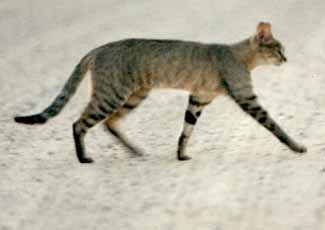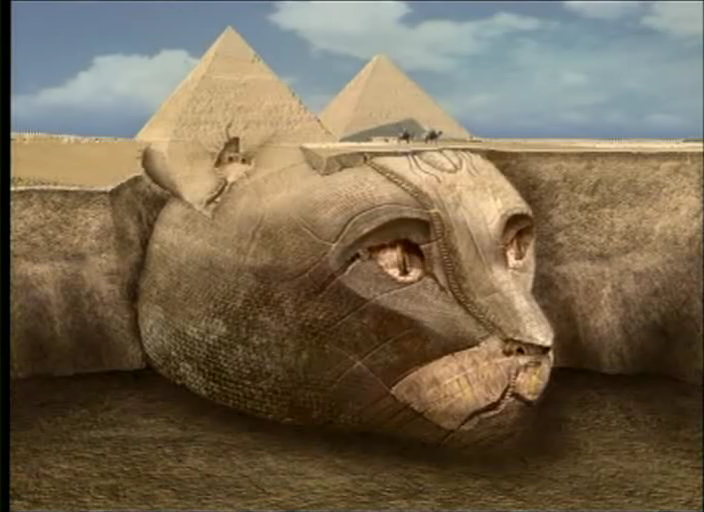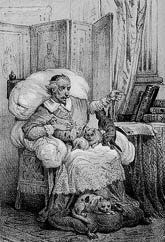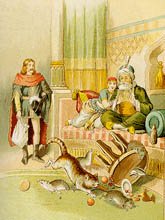Tania
IB Expert
- Messages
- 2,555
- Reaction score
- 310
- Gender
- Female
- Religion
- Christianity
Re: Kitty & Tania's Animal Thread
Cat history
from Source1
Source2
Cat history and the evolution of the cat dates back about 200 million years to when their earliest ancestors evolved from reptiles.
Prehistoric remains of catsare few and far between but the dental pattern of modern day cats is similar to that found in fossilised creodonts - primitive fish-eating mammals which lived about 50 million years ago.
However, this genetic line failed to survive and there are no direct descendants today. At the same time, another group of animals called the miacids (which lived 40 - 50 million years ago) also had cat-like cutting teeth. These were small weasel-like forest-dwelling creatures. Not just cat history, but the history of all land dwelling carnivores can be traced back to these animals.
Even though everyone has heard about the "Sabre-toothed Tiger" or Smilodon - which had canine teeth 8 inches (20cm) or longer - this animal is not in fact related to the big cats found on Earthtoday. The last sabre toothed "cats" died out as recently as 30,000 years ago (based on fossil records in Britain) and possibly only 13,000 years ago (fossil records in California).
The sabre-toothed tiger:
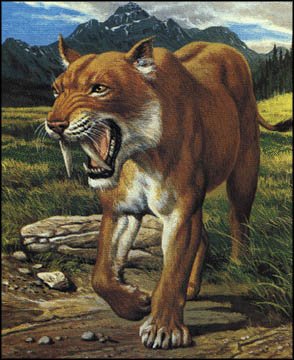
The skeleton of the sabre-toothed:

Fossils from 12 million years ago are similar to modern small cats. By 3 million years ago there were a wide variety of cats which populated the whole world except the Arctic, Antarctic, Australia and the inhospitable tundra regions. However, Australia does have some indigenous cat-like species e.g. the "marsupial cat".
The marsupial 'Tiger Cat' which is now on extinction list :
:

Northern quoll, a cat-sized marsupial - here he has another name :-[ :

Cat history
Cat prehistory: ARCHAEOLOGY
from Source1
Source2
Cat history and the evolution of the cat dates back about 200 million years to when their earliest ancestors evolved from reptiles.
Prehistoric remains of catsare few and far between but the dental pattern of modern day cats is similar to that found in fossilised creodonts - primitive fish-eating mammals which lived about 50 million years ago.
However, this genetic line failed to survive and there are no direct descendants today. At the same time, another group of animals called the miacids (which lived 40 - 50 million years ago) also had cat-like cutting teeth. These were small weasel-like forest-dwelling creatures. Not just cat history, but the history of all land dwelling carnivores can be traced back to these animals.
Even though everyone has heard about the "Sabre-toothed Tiger" or Smilodon - which had canine teeth 8 inches (20cm) or longer - this animal is not in fact related to the big cats found on Earthtoday. The last sabre toothed "cats" died out as recently as 30,000 years ago (based on fossil records in Britain) and possibly only 13,000 years ago (fossil records in California).
The sabre-toothed tiger:

The skeleton of the sabre-toothed:

Fossils from 12 million years ago are similar to modern small cats. By 3 million years ago there were a wide variety of cats which populated the whole world except the Arctic, Antarctic, Australia and the inhospitable tundra regions. However, Australia does have some indigenous cat-like species e.g. the "marsupial cat".
The marsupial 'Tiger Cat' which is now on extinction list

Northern quoll, a cat-sized marsupial - here he has another name :-[ :






